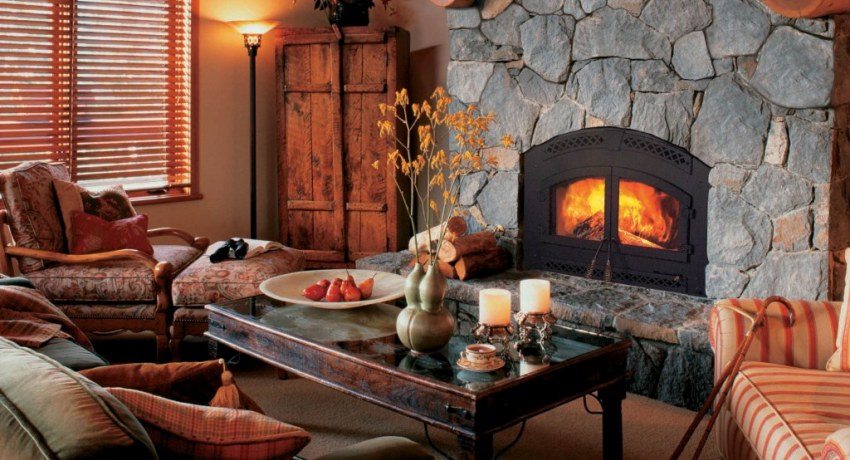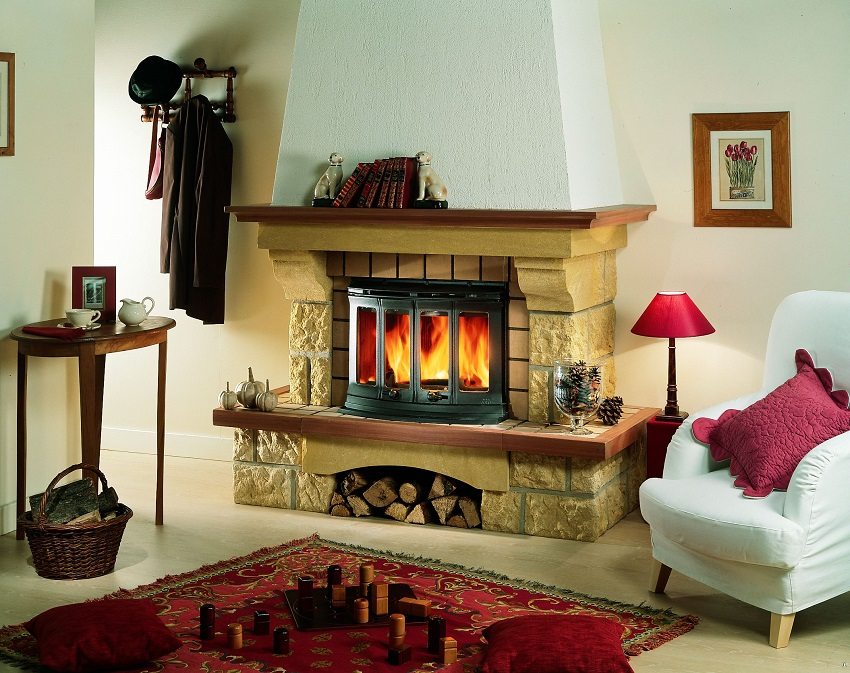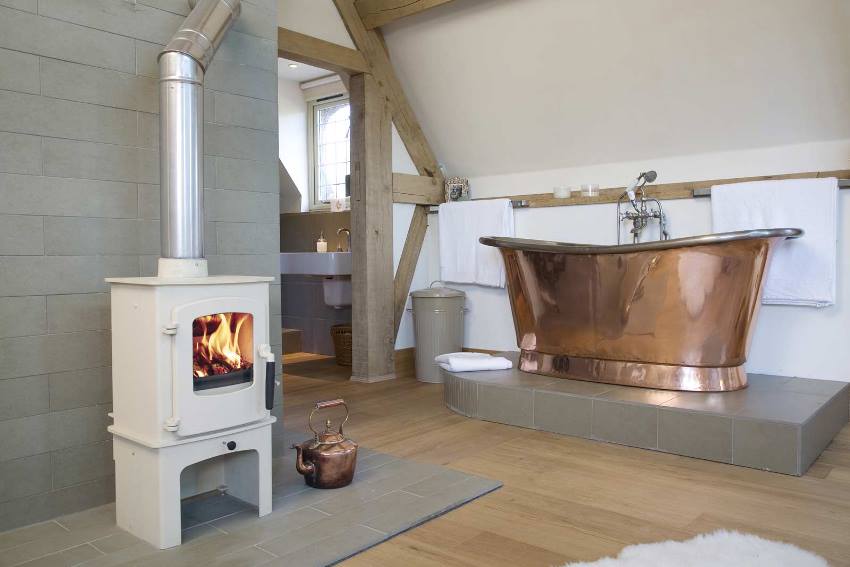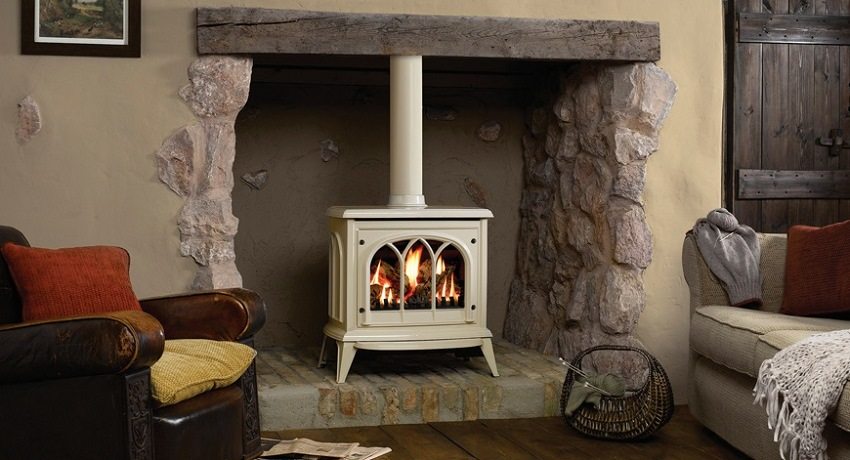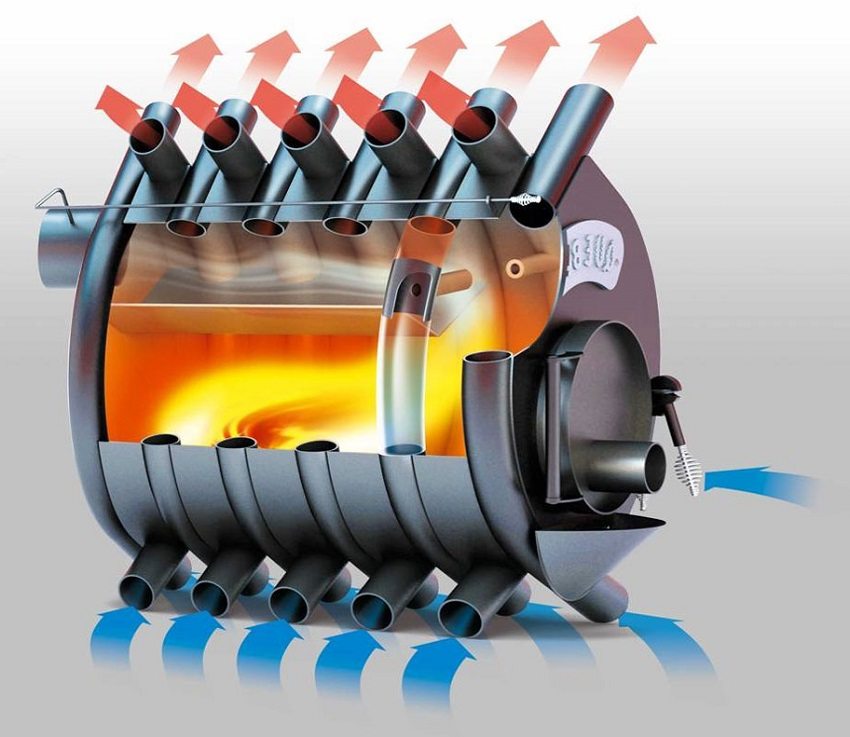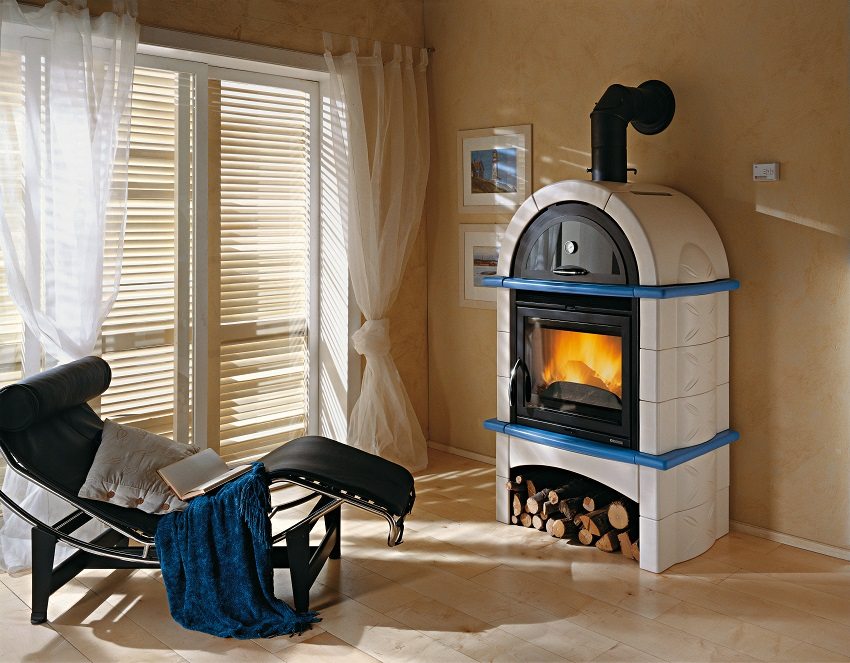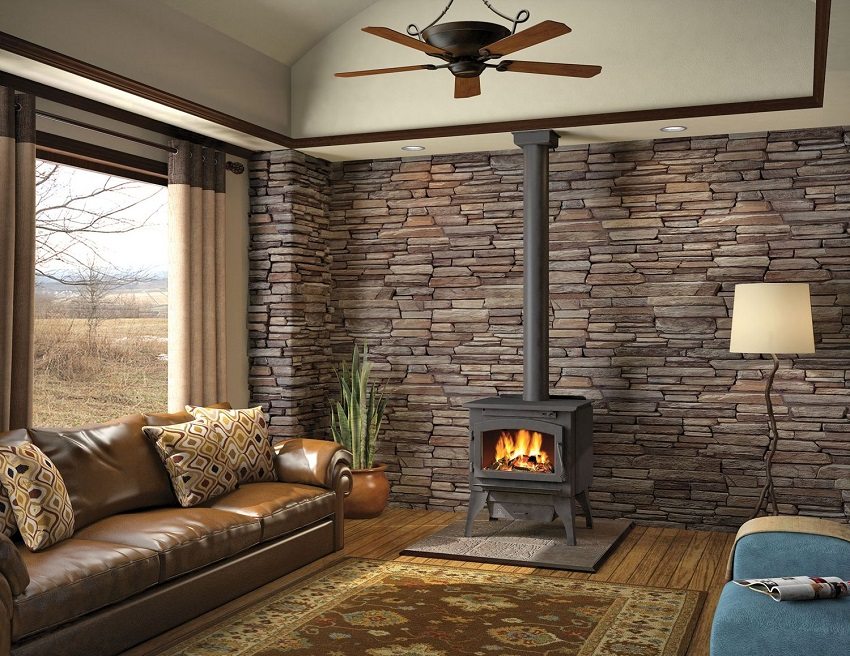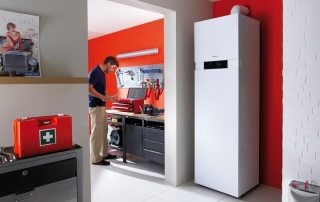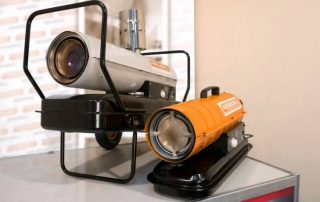The modern gasification of even settlements close to megacities has been virtually frozen for about ten years. Even in the prosperous Moscow region, you can easily find old settlements in a 50-kilometer zone where there is no gas and it is not known when it will be. There is documentation and supply in the cottage settlements under construction, but the buyer of a cottage or a plot is often faced with the fact that central heating is out of the question. But if there is a fireplace stove for giving long burning, then the lack of central heating is not a problem - rather the opposite.
Content [Hide]
The advantages of autonomous heating
In Europe, all northern territories have virtually no central heating. Almost on any plan or photo of a brick house - a stove, fireplace, or even at the project stage, a place allocated for them.
FAct! Even small-sized cast-iron stoves (fireplaces) in a wooden house are able to cope with the heating of very large rooms.
It just so happened that, unlike the former USSR, in Europe there are nowhere areas with huge deposits of coal, oil and gas, so no one wants to burn the already expensive fuel with the loss of more than a third of the heat in pipelines from even the most efficient CHP. In the post-Soviet space, on the contrary, they are accustomed to giant boiler houses, and therefore when the word "stove" is used, the majority recalls with a smile the "stove" of the 1920s. However, even a homemade lopsided "potbelly stove" has an efficiency of more than 80%, while a CHP plant, although it gives out 90% in the form of heat, but 35% is lost in the heating main, and when distributed in an apartment building through pipes, it goes from 5 to 10% to depending on the peak consumption.

Stove-fireplace with a water circuit in a combined heating and hot water supply system of a country house
Electric heaters are ineffective (of course, there are Asian technologies for laying nichrome spiral threads directly in wall blocks, but in Russia this is still far away), since only air will warm up, and ventilation naturally blows it out. If the electric heater is turned off on a winter night, the temperature in the room will drop by 2-3 ° C in 15 minutes. Since fresh air is also needed, in order for a room of 16-30 m² to be able to warm up, an apparatus with a capacity of 3-5 kW will be required, operating all night with fully insulated windows, and even with an open window it is better not to look at the electric meter.
Modern cast iron fireplace stoves for the home are far from their predecessors in terms of design and efficiency.
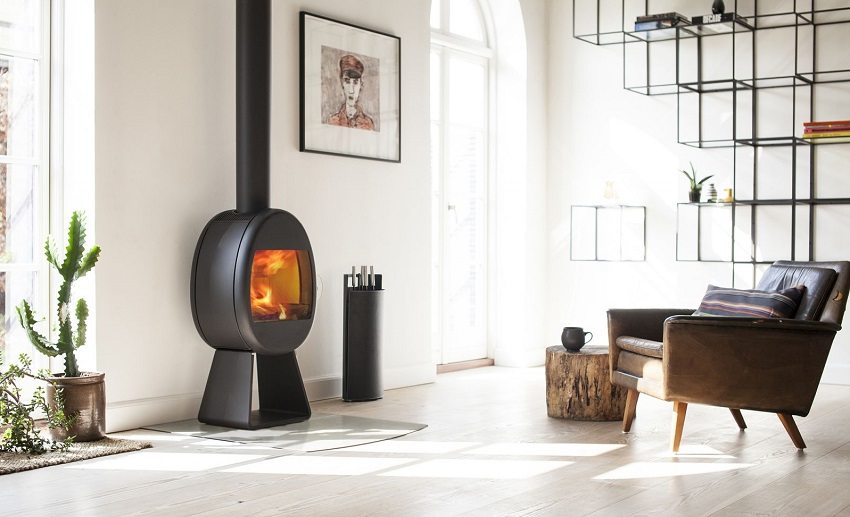
Compact ovenfireplace in the living roomdecorated in a modern style
Helpful advice! For a country house, a fireplace stove with a water circuit or air heating is several times more effective than connecting to a central heating system.
Currently existing fireplace stoves have a number of advantages:
- frugality;
- ease of ignition;
- fast warming up of the room;
- versatility of use - some models are equipped with hobs;
- mobility and compactness;
- simplicity and safety of operation;
- the ability to remove ash during operation;
- varied design;
- long service life.
Of the shortcomings, one can only cite the need for firewood and space for storing them.
A fireplace stove with a water heating circuit is gradually becoming a familiar attribute of a modern country house. At the same time, the question "How to install a fireplace stove in a wooden house?" with the modern development of small construction technologies, it is not insolvably difficult.
Fireplace stove for giving long burning
How a long-burning unit differs from a conventional stove for a summer residence or fireplace can be seen from its name. Unlike stoves and fireplaces of conventional design, modern fireplace stoves for a long-burning house are capable of functioning on one tab of fuel (wood or pellets) for several hours.
Working principle and design
During normal combustion (in a fire or in the furnace of an ordinary wood-burning stove), most of what is capable of burning escapes from the flame without benefit: unburned carbon monoxide, methane, propane, hydroamines and many more combustible substances are carried out by the convection air flow from the combustion zone, where cool down instantly.
The principle of operation of long-burning furnaces, as well as pyrolysis boilers, one - complete combustion of fuel to CO2, H2O and ash, that is, the mineral residue.
Interesting to know! Pyrolysis (from the Greek. pyr - fire, heat and lysis - decomposition, decay) - thermal decomposition of organic compounds (wood, oil products, coal, etc.) without air access.
Full combustion of fuel in wood-burning stoves-fireplaces for long burning for summer cottages is due to the design features of the combustion chamber. It is divided into two sectors: in the lower one, firewood is burned, which is slow due to the limited access of oxygen. An injector and a nozzle are installed in the upper sector, which operate in the afterburning mode. This configuration makes it possible to burn the raw material in the smoldering mode, which leads to pyrolysis. The gas formed during the high-temperature combustion of wood in a sealed chamber is called pyrolysis, and the furnaces themselves that create such conditions are also called gas generating ones.
Varieties of stoves for giving long burning
The main division of fireplaces-stoves intended for installation in wooden houses is division according to the material from which they are made. Stoves can be steel or cast iron.
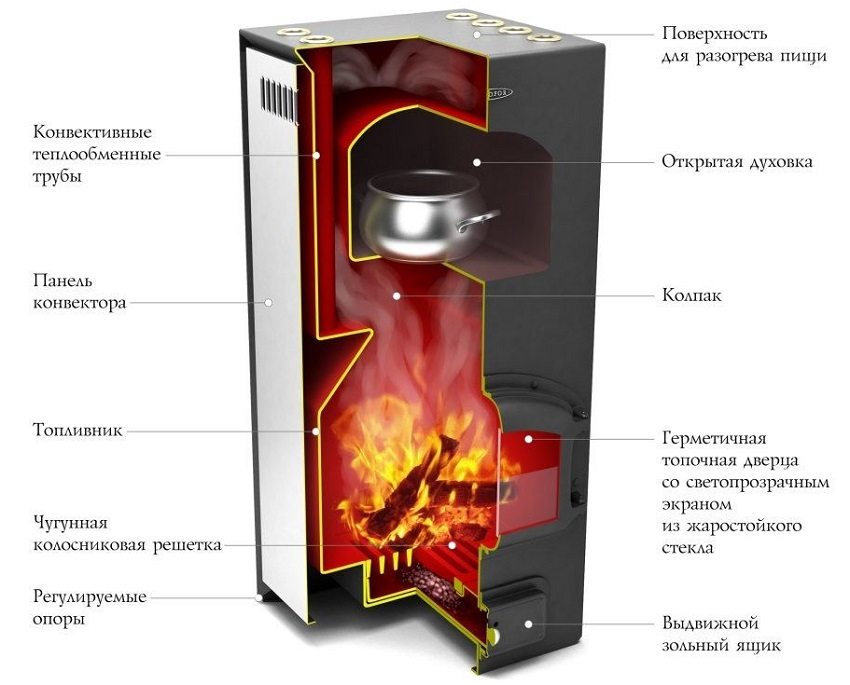
Bell design long burning ovens with open oven and surface for heating food
Steel ovens heat up faster and release heat to the surrounding space faster, heating the room to a comfortable temperature. Therefore, it is preferable to install them in those country houses that are used sporadically and on short visits. If a suburban building is intended for long-term or permanent residence, including in the cold season, it is better to install a cast-iron stove in it, optimally connected to a heating system with some kind of coolant (water or air).
Related article:
|
One of the most popular models is the Buleryan oven.This type of stove has an improved heat exchanger design and, provided it is equipped with a collector and a water jacket, can be used to heat several rooms. In addition, it can also serve as a cooking stove.
Choosing a fireplace stove for home heating
The basic principles of choosing a stove (fireplace) for a brick or wooden house are simple. A specific model is chosen based on:
- from the features of the operation of the heated building (how and how long it will be necessary to keep heat in it);
- the volume of the heated room;
- location of the heating unit.
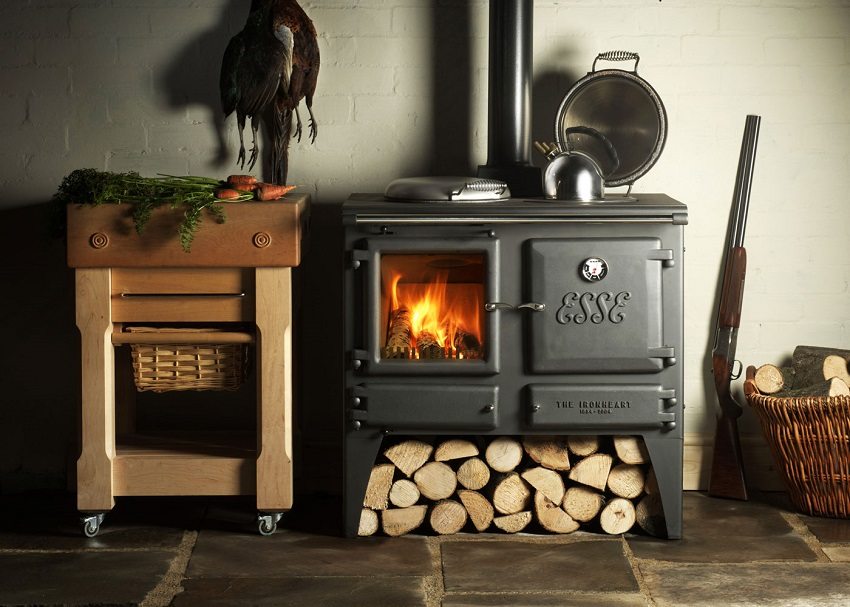
A stove-fireplace with a hob and an oven is a universal unit for cooking and autonomous heating of a country house
Depending on the speed of burning one bookmark, stoves and fireplaces for heating a private house are divided into three classes as follows:
- А - less than 3 hours of work on a one-time fuel filling;
- B - from 7-8 to 10 hours;
- C - more than 10 hours, which in reality is hardly achievable (only gas-generating furnaces are capable of this).
A quality class B stove should provide 8 hours of heating on one tab.
Numerous photos of brick fireplace stoves for summer cottages will help you choose a design option, taking into account both the necessary parameters and the furnishings of the premises.
Do-it-yourself fireplace stove for home
Do-it-yourself installation of a fireplace stove for a brick dacha is not a myth. It is not difficult to choose a fireplace stove for a summer residence and a house. Existing models are available in a variety of sizes and configurations. Heating equipment catalogs in chain stores in most cases contain descriptions and photos of fireplaces in the house.
An indispensable condition for installing a stove or fireplace for long burning in any country house is the presence of a chimney in it, which is necessary to create traction and remove carbon monoxide. Also, the heating unit must be located away from flammable elements of the environment, and the floor under it must be protected with metal sheets.
But it is in principle impossible to convert ready-made masonry fireplaces-stoves for a wood-fired home into gas-generating ones if you literally cling to the terms. The combustion process itself requires very precise control - "by eye" is not enough, sensors are needed. A couple of minutes of leaving the temperature regime is enough, and the pyrolysis process will be "extinguished" - it will have to be restarted, starting with ignition. Hence the old semi-respectful term "stove-maker" or "stoker" appeared - a specialist who knew how to control the operating mode of a stove, was appreciated as an experienced locomotive driver.
Therefore, fireplaces and long-burning stoves are made either in the factory or according to the drawings of craftsmen with their own welding machines and great experience. But the market reacts quickly: there are cast-iron or steel inserts on sale for already laid brick stoves and fireplaces. True, because of the physics of pyrolysis, these "inserts" have fixed sizes - no more than 70-80 cm, so their power is average. At the same time, the installation of a stove (fireplace) in a wooden house, its connection and maintenance are no different from standard stoves-fireplaces.
The optimal choice and proper arrangement of a modern fireplace stove in a country house not only helps to create a cozy atmosphere, but also solves the problems of autonomous heating and hot water supply.
